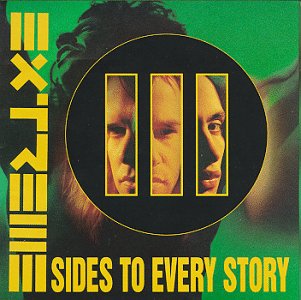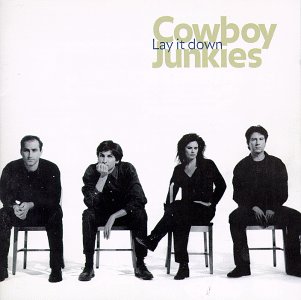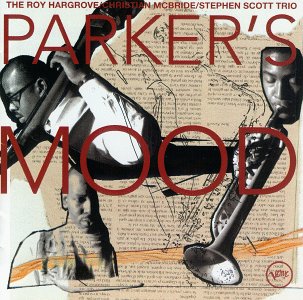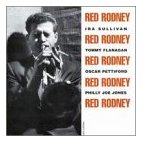Dodson Audio DA-218 24/768 Digital to Analog Converter
| Dodson Audio DA-218 24/768 Digital to Analog Converter |
|
|
|
Greg Petan |
|
November 2004 |

As an audiophile, I have been in a rather enviable position over the past five years. While digital technology has traveled a treacherous path towards musical truth, I’ve been in possession of what was, and still is, a CD player that represents the best of what this otherwise perplexing medium has to offer. As my cohorts have spent their valuable time desperately seeking just the right transport, DAC, and digital interconnect combination, not to mention burning carbs in an effort to sort out the sonic benefits of the new competing hi-rez formats, my trusty one box solution has sailed along with ease. In all fairness, my Linn CD12 does go for – Que the spit take – a cool $20k.
So when Jeffery Smith of Silversmith Audio cable fame suggested I give the Dodson DA-218 DAC a listen, I didn’t exactly move heaven and earth to make it happen. After a few casual e-mails between proprietor/designer Mr. Ralph Dodson and myself, the DA-218 finally found its way into my system. The previous week, a whole new tangle of power chords, interconnects and speaker wire arrived from Virtual Dynamics, a company you will be hearing a mouthful about shortly. As well, a new monster speaker from Krell Industries took up a position in my system. This amalgam of new products created a beast of a system that I would have to spend much time and effort fine-tuning. After a couple of weeks of schlepping, tweaking, twisting, tightening, spiking, plugging and unplugging more times than I can count, I achieved a modicum of system synergy that would allow the DA-218 to do what it does best. In the end, I removed the big Krells and back in went my Talon Firebirds. Changing speakers at this point was just too much change to grasp.
Extra! Extra! Read All About It! Mad Scientist Makes Audiophile Very Happy!
Here are the unique features Ralph has implemented in the DA-218:
– Cryogenic treatment- Eliminates crystal boundary formations and stresses in solder joints throughout the circuit boards and resistors.
– Cutting edge upsampling and oversampling. All input signals are upsampled to 96kHz via an algorithm that produces a s/n ratio of -117db digital filters oversample to 768kHz sampling rate and 24-bit word lengths.
– Bybee Quantum Purifiers remove noise at the incoming AC.
– Extensive use of internal non-magnetic shielding throughout the chassis, power supplies and circuits.
– Individual power supplies for analogue and digital sections
– balanced four layer printed circuit boards
– Custom capacitors made to Dodson’s specs
– 100kHz wideband analog filters
– No-jitter re-clocked signal to the 24-bit/96kHz DAC chips.
(Visit Dodson’s web site for the full story @ www.dodsonaudio.com)
Visually, the DA-218 is rather under whelming, reminding me of an entry-level high-end component rather than the cutting edge piece that it is. For nearly $8k, I would beg Ralph to give the DA-218 a cosmetic overhaul. I understand that this is a limited production product, thus raising the price for machining fancy casework, but if there is something that could be done, to spruce up the looks I believe it would draw the attention that it so richly deserves. Despite its utilitarian appearance, the interior treatment mentioned above is truly cutting edge and I am glad to report that the DA-218 is solidly constructed and operated without a single glitch. Luckily, my unit had several hundred hours on it before it arrived and that is a good thing. According to Ralph, the DA-218 takes a very long time to burn in, somewhere between 300 and 500 hours to maximize. Connections include one set of XLR and RCA analog output jacks. Digital connections are one RCA, one BNC, one Toslink, and one XLR. The front panel also has phase, signal lock and de-emphasis indicators. There is a button dedicated to each function including a standby feature, which acts as a power on/off switch.

My initial impression of the DA-218 was as immediate as it was favorable. The Model DA-218 has an extremely lively feel, accentuating rhythmic propulsion on both small-scale dynamic contrasts as well as “the broader fundamental rhythm.  Listening to Tommy Flannigan play “Verdandi” from Sea Changes (ECD22191) as I have thousands of times, I was set into a full body mojo as the Flannigan Trio was seriously on the same musical page. In particular, George Maraz’s frenzied bass runs were nicely resolved, with one note seamlessly connected to the other while preserving each notes fingering and transient.
Listening to Tommy Flannigan play “Verdandi” from Sea Changes (ECD22191) as I have thousands of times, I was set into a full body mojo as the Flannigan Trio was seriously on the same musical page. In particular, George Maraz’s frenzied bass runs were nicely resolved, with one note seamlessly connected to the other while preserving each notes fingering and transient.  If that didn’t convince me, Extreme playing “War Heads” from III Sides to Every Story (A&M31454), left absolutely no doubt. This track has a ferocious kick drum driven pace that when properly reproduced, can lay waste to an unsuspecting driver. The DA-218 did a very good job at allowing the power and control of the drum while preserving whatever natural timber of the bass drum that one may find on a rock recording of the early nineties. Hungering for more, in went Stevie Ray Vaughn’s Soul to Soul, which despite it’s many sonic failings, The DA-218 dug out the swagger of Stevie Ray which had to that point, been MIA .The music on this disc. On track three “Look at little sister” the DA-218 manages to turn hamburger back into a cow (or digits back into an analog waveform if you will) allowing not only the lower registers to sync up, but keeping all the transients of the, drums, guitar and cymbals superbly clean leaving a “happening in real time” feel in it’s wake. It should be said that with the CD12 as a transport, the bass of the DA-218 is rounder and warmer, while the inclusion of the Gryphon Mikado gave the bass a tighter and faster presentation.
If that didn’t convince me, Extreme playing “War Heads” from III Sides to Every Story (A&M31454), left absolutely no doubt. This track has a ferocious kick drum driven pace that when properly reproduced, can lay waste to an unsuspecting driver. The DA-218 did a very good job at allowing the power and control of the drum while preserving whatever natural timber of the bass drum that one may find on a rock recording of the early nineties. Hungering for more, in went Stevie Ray Vaughn’s Soul to Soul, which despite it’s many sonic failings, The DA-218 dug out the swagger of Stevie Ray which had to that point, been MIA .The music on this disc. On track three “Look at little sister” the DA-218 manages to turn hamburger back into a cow (or digits back into an analog waveform if you will) allowing not only the lower registers to sync up, but keeping all the transients of the, drums, guitar and cymbals superbly clean leaving a “happening in real time” feel in it’s wake. It should be said that with the CD12 as a transport, the bass of the DA-218 is rounder and warmer, while the inclusion of the Gryphon Mikado gave the bass a tighter and faster presentation.
Now Mr. Dodson was adamant that the DA-218 captures the analog experience in a way no other digital processor can. Discounting for manufacturers hype, I was expecting at least a good measure of this quality considering the very dear $7,995 price tag. While I cannot ultimately testify that the DA-218 bests all processors in the quest for the “tastes like analog” crown, I can safely say the DA-218 has a way with dimension, timbre and color, high frequency sweetness without the loss of detail and space which are all hallmarks of great analogue. Recording after recording reveals a wealth of space and air that one hardly associates with even the better digital available. Listening to the Cowboy Junkies’ Margo Timmons sing “Something More” from Lay it down (GEFD24953) I was struck by how open airy and down right ethereal her voice was. The same holds true when reproducing the trumpet. Getting the horn right is one of the hardest things a system can attempt, especially if you are expecting realistic dynamics without the penalty of compression, flattening of image dimension and hardening of timbre. With the DA-218 in the chain, Roy Hargrove’s trumpet on “Laura” from the Roy Hargrove/Christian McBride/Steven Scott Trio CD (Verve 314 527 907-2) entitled Parker’s Mood is kissed with a sweetness and seamless dynamic scale. T
Listening to the Cowboy Junkies’ Margo Timmons sing “Something More” from Lay it down (GEFD24953) I was struck by how open airy and down right ethereal her voice was. The same holds true when reproducing the trumpet. Getting the horn right is one of the hardest things a system can attempt, especially if you are expecting realistic dynamics without the penalty of compression, flattening of image dimension and hardening of timbre. With the DA-218 in the chain, Roy Hargrove’s trumpet on “Laura” from the Roy Hargrove/Christian McBride/Steven Scott Trio CD (Verve 314 527 907-2) entitled Parker’s Mood is kissed with a sweetness and seamless dynamic scale. T he mechanical nature of the system sounds less hard and the illusion of a real trumpet remains complete and intact. This, in turn, kept my attention and involvement in the music intact.
he mechanical nature of the system sounds less hard and the illusion of a real trumpet remains complete and intact. This, in turn, kept my attention and involvement in the music intact.
The main complaint with digital is that its distortions being of a non-harmonic nature, yank the listener by the scruff of the neck right out of the musical flow. As a result, listener fatigue sets in quickly sending them scurrying back to the turntable. The DA-218 goes a long way toward curing those ills. On a recent visit, Mike Farnsworth of Talon Audio commented that the system “sounded like analog and nothing like digital.” Those were his unprompted words. Soon after our beloved publisher Clement Perry made his bi-monthly visit with a few new music samplers in hand. After several tracks, Clement was rather stunned as to the analog-like ease and naturalness of the system. Yes, the deck was stacked in favor of the DA-218 as all the components I have allow for a fairly good measure of transparency and neutrality without the sacrifice of musicality. Some would argue that transparency inherently defines musicality, and in theory I would agree, in practice however, most systems that are claimed to be transparent first and foremost usually don’t sound much like music to these ears. That said, the DA-218 does allow for both great overall transparency and seamless tonal neutrality, which in conjunction with my system, produces greater musicality and yes, a far more analog than digital experience.
A comparison to the Linn CD12 powered by its own internal DAC is well worth a go. On its own merits, the CD12 is unparalleled for its treble smoothness, truth of timbre and resolving power without the penalty of forwardness or brightness. It also images in a totally natural way, avoiding any flattening or etch. The knock on it would be that it can be a tad dynamically polite and laid back, though no one who has heard it in the last five years has really complained. However, by adding the DA-218 to the signal via the Virtual Dynamics balanced digital interconnect and partnering Master series power chord, the sound became more incisive and “visible”. Instrumental color improved, but it was the sound stage that really shocked me. Images seemed to burst forth, creating an almost “exploded” view into the stage. As a result, I was compelled to spread the Talon Firebirds apart an extra foot or two in order to accommodate the robust soundstaging. Another quality truly unique to the CD12 is its ability to “see through” instrumental textures. Here the DA-218 proved the CD12 to be rather ghostlike or vague compared to the densely colored images presented by the DA-218.
Late in the game, as mentioned earlier, I received the new Gryphon Mikado CD player, what a beauty. Used as a transport the combo yielded spectacular results. The shocking level of realism and flat out musical magic has elevated the performance of the system to a level I never thought possible. I will get into the specific traits the Mikado brings to the table in a follow-up to Clement’s review. Also shortly afterward, Silversmith’s Palladium digital cable showed up at my door. What an embarrassment of riches!. My positive reactions to the Palladium line stayed true with the digital link. Capturing an uncanny level of information while revealing such natural texture and color moved the performance of the Dodson/Mikado combination in the direction of the organic, if a tad less incisive.
As I was wrapping up the review, several sets of Final Labs Durama-II isolation devices arrived. I realized the DA-218 enjoys being isolated from bad vibes pretty early on in the review (I guess I should have mentioned that). These little brass jewels use a ball bearing sandwiched between two puck shaped “cups.” When placed under the DA-218, the sound gained focus and opened up, yielding a smoother treble and greater overall ease. At $99 for a set of four, these are a no brainier.
The DA-218 has another trick up its sleeve: the ability to process DVD audio. Now I have not been a huge proponent of the new medium, as I have not heard a product with the pedigree of the DA-218. With the help of the much-heralded Linn Unidisk 1.1,  I would get a full measure of the DA-218. Popping in Red Rodney 1957 (DAD1003) I was immediately struck with the level of palpability and color rendered. Compared to the red book standard, the DVD Audio was clearly superior. All the traits of the DA-218 held true, there was just more of a good thing, and in this case more was better.
I would get a full measure of the DA-218. Popping in Red Rodney 1957 (DAD1003) I was immediately struck with the level of palpability and color rendered. Compared to the red book standard, the DVD Audio was clearly superior. All the traits of the DA-218 held true, there was just more of a good thing, and in this case more was better.
Next came Deep Purple’s Machine Head (R97664). I have been listening to this disc since I was 12 years old (Oh my God, that’s thirty years!). The red book version is excellent, great impact, swing to spare, and a grain and glare free high end. Through the DA-218, it was like being there in concert. My personal anthem “Lazy” was just a hoot. “Highway Star” brought me back to my bass playing days in high school and college. Who ever thought Deep Purple could be so sentimental. The direct connection to the music was stunning. This is high-rez done right, finally! I look forward to sampling many more DVD audio discs in the very near future.
DaDaDaDa DAC’s All Folks!
Yes, I love the Linn CD12. We have had a great relationship over the years and may well stay together for some time to come. But I have to admit, it was great fun working the Dodson Audio Model 218 into the mix. Call it the three-way I will (probably) never have in real life.
As for its application, I can’t imagine a front-end short of the highest of high-end esoterica that the Model 218 couldn’t improve upon, and possibly by a large measure. Even top of the heap rigs may well find the DA-218 an unexpected step up. As I sit here listening to Tommy Flannigan, this time on Live at the Village Vanguard, it dawns on me yet again, I could sit here and listen to music all day and well into the night. Analogue? Digital? With the DA-218, those questions evaporate into the ether replaced by what to listen to next? What music to explore next? If you are a well-healed analog devotee who has adopted digital more as matter of convenience than ultimate musical enjoyment, or a digiphile looking to make the leap from the ordinary to the extraordinary, you may find a one-two punch for both red book CD and DVD audio in the Dodson Audio DA-218, I sure did.
_______________
Specifications:
Three Digital Inputs, Standard (Coax-1) S/P DIF input via RCA
(Coax-2) S/P DIF input via BNC
(Optical) EIAJ Plastic Fiber Optic TosLink
Fourth Digital Input, Optional (AUX) AES/EBU Balance via XLR
Two Analog Outputs Left & Right Single-ended via RCA
Left & Right Balanced via XLR
Output Level 2.3 Volts RMS Single-ended
Frequency Response 10 Hz to 100 KHz
Output Impedance 75 Ohms Single-ended, 150 Ohms Balanced
Channel Separation >120 db @ 1 KHz
Signal Inverting Digital Domain
Sampling Frequencies 32 KHz, 44.1 KHz and 48 KHz, 96 KHz (automatically selected)
Modularity/Upgradeability The Upsampler module, Microprocessor, Digital filter and Analog IC’s are Socketed for future format upgrades
Power, International 105/220 VAC 50/60 Hz via IEC connector
Power Consumption 58 Watts @ 120 volts, 60 Hz
Dimensions 3″ High, 17″ Wide, 12″ Deep
Silver front faceplate is standard.
A black front faceplate is available with special order request.
Weight 18 lbs.
Warranty Three (3) Year, Transferable Warranty
Price: $ 7,995.00
Contact: Dodson Audio, Inc.
14340 Marianopolis Way
San Diego, CA 92129
Phone (858) 484-8199
E-mail info@dodsonaudio.com
![]()
Don’t forget to bookmark us! (CTRL-SHFT-D)
Stereo Times Masthead
Publisher/Founder
Clement Perry
Editor
Dave Thomas
Senior Editors
Frank Alles, Mike Girardi, Key Kim, Russell Lichter, Terry London, Moreno Mitchell, Paul Szabady, Bill Wells, Mike Wright, Stephen Yan, and Rob Dockery
Current Contributors
David Abramson, Tim Barrall, Dave Allison, Ron Cook, Lewis Dardick, Dan Secula, Don Shaulis, Greg Simmons, Eric Teh, Greg Voth, Richard Willie, Ed Van Winkle, and Rob Dockery
Music Reviewers:
Carlos Sanchez, John Jonczyk, John Sprung and Russell Lichter
Site Management Clement Perry
Ad Designer: Martin Perry





Be the first to comment on: Dodson Audio DA-218 24/768 Digital to Analog Converter